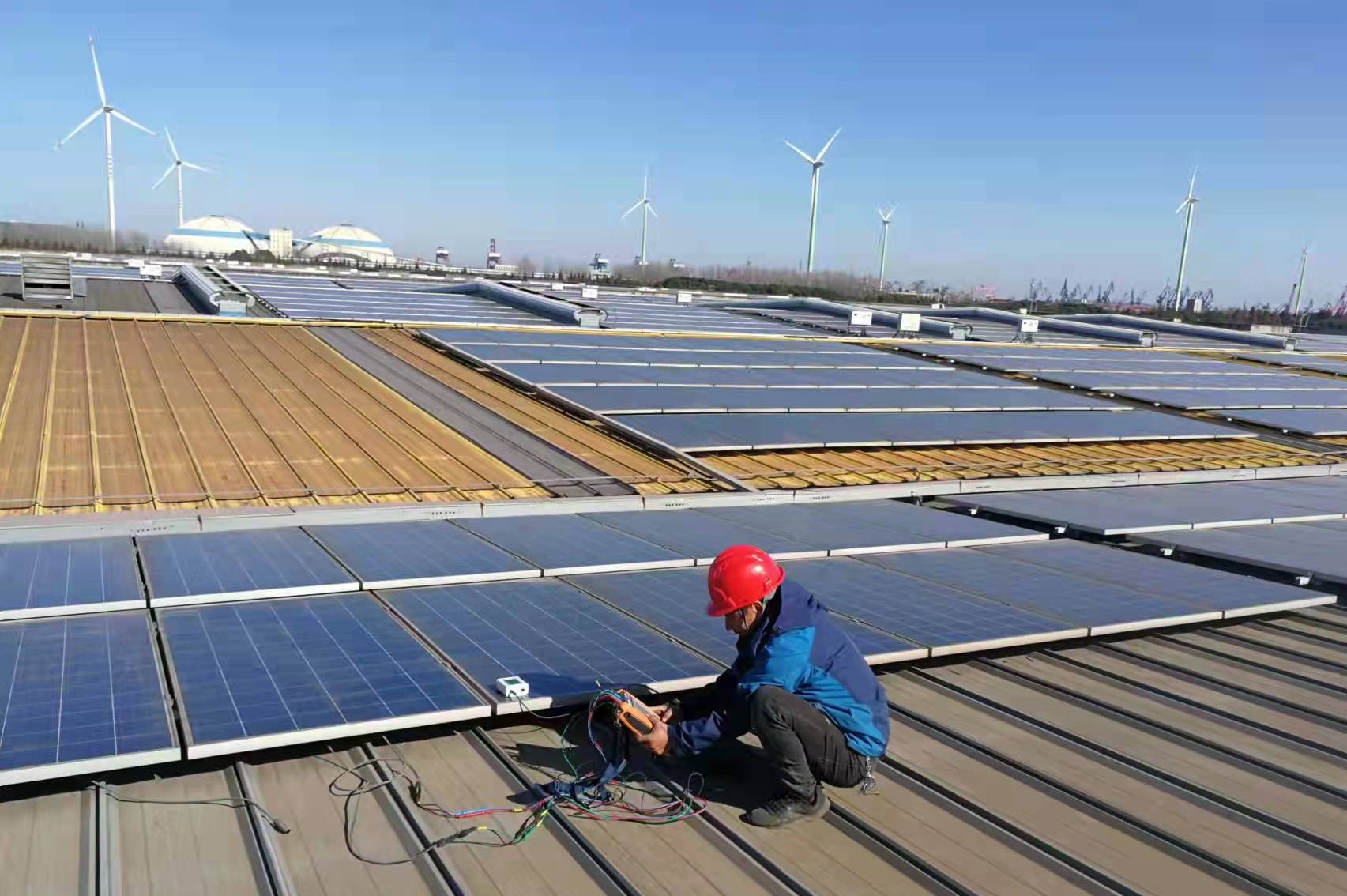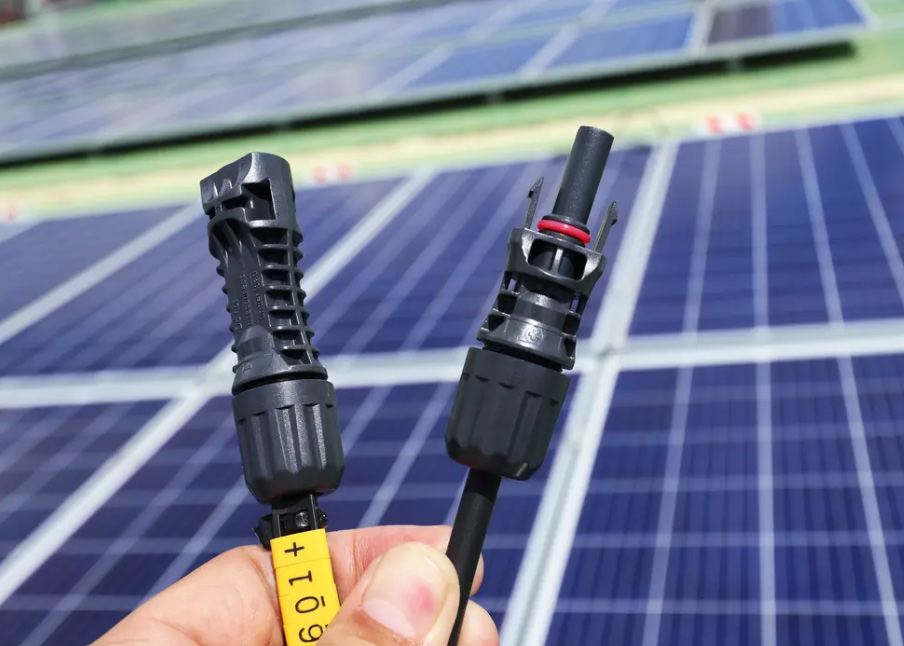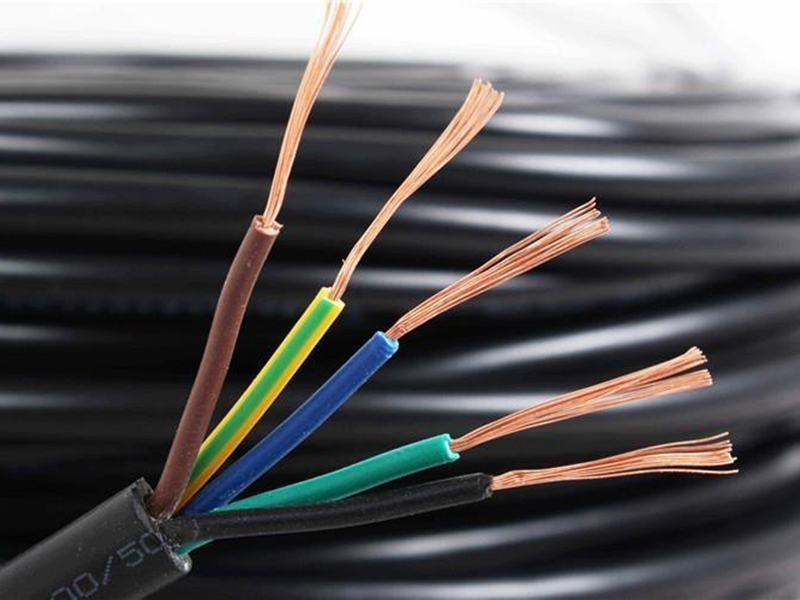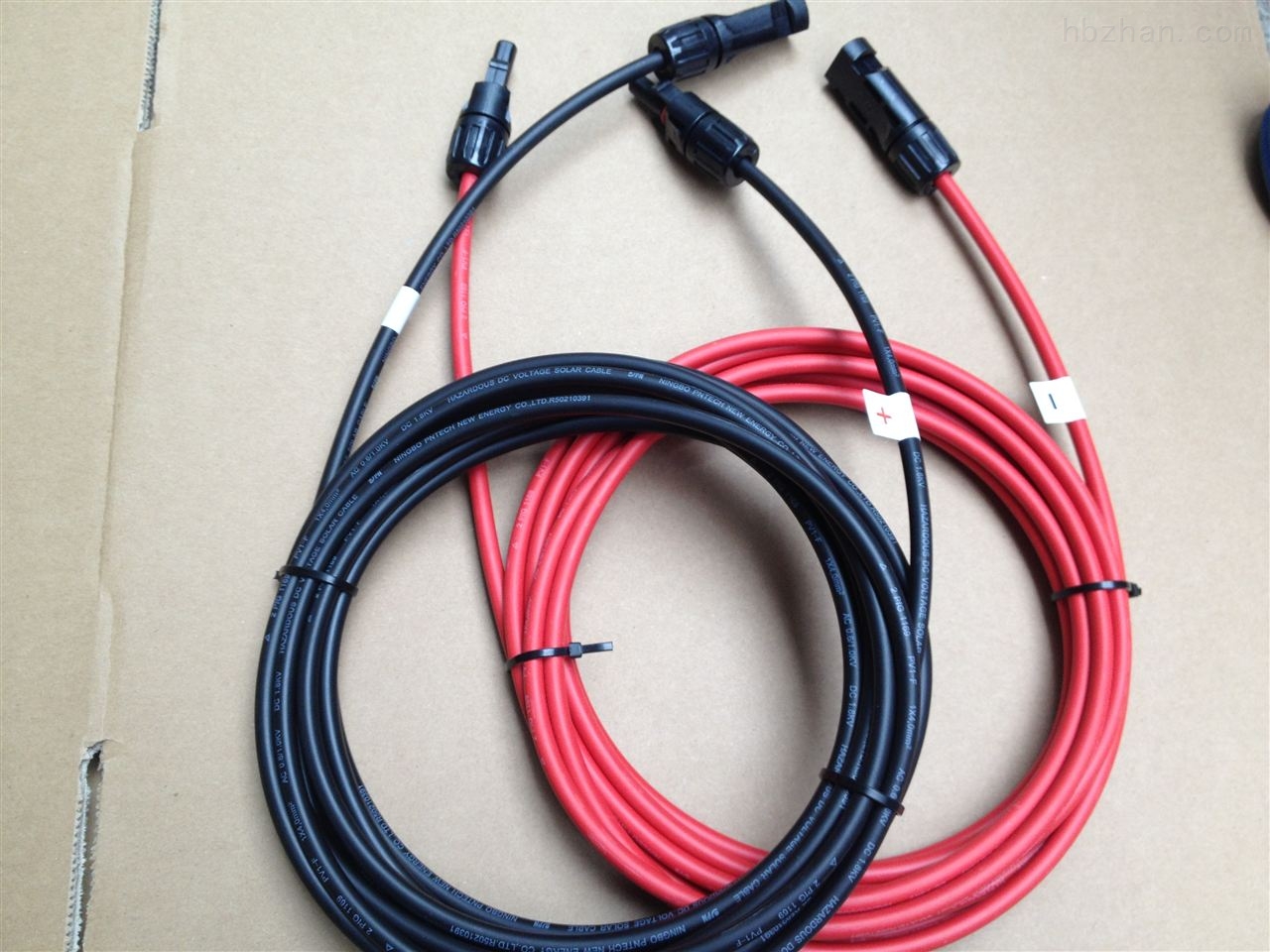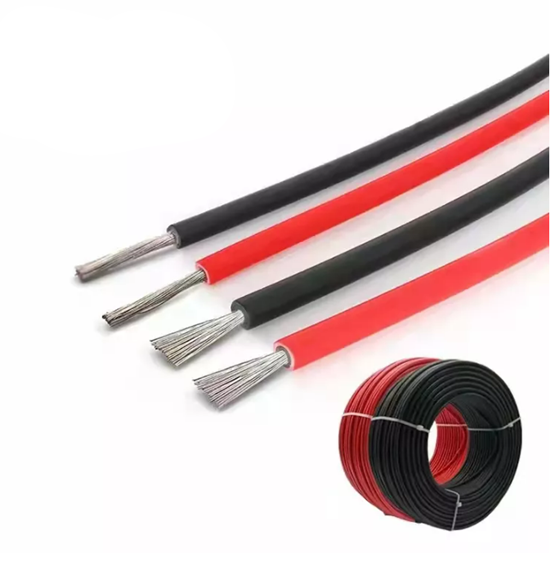Why the performance of photovoltaic cables is important? Photovoltaic cables are often exposed to sunlight, and solar energy systems are often used in harsh environmental conditions, such as high temperatures and ultraviolet radiation. In Europe, sunny days will cause the on-site temperature of solar energy systems to reach 100°C.
Currently, the various materials we can use include PVC, rubber, TPE and high-quality cross-linking materials, but unfortunately, rubber cables rated at 90°C and even PVC cables rated at 70°C are often used outdoors. In order to save costs, many contractors do not choose special cables for solar energy systems, but choose ordinary PVC cables to replace photovoltaic cables. Obviously, this will greatly affect the service life of the system.
The characteristics of photovoltaic cables are determined by their special cable insulation and sheath materials, which we call cross-linked PE. After irradiation by an irradiation accelerator, the molecular structure of the cable material will change, thereby providing its various performance aspects.
Resistance to mechanical loads In fact, during installation and maintenance, cables can be routed on the sharp edges of roof structures, and the cables must withstand pressure, bending, tension, cross-tension loads and strong impacts. If the cable sheath is not strong enough, the cable insulation layer will be seriously damaged, thus affecting the service life of the entire cable, or causing problems such as short circuit, fire and personal injury.
Performance of photovoltaic cables
Electrical properties
DC resistance
The DC resistance of the conductive core of the finished cable at 20℃ is not greater than 5.09Ω/km.
Water immersion voltage test
The finished cable (20m) is immersed in (20±5)℃ water for 1h and then tested for 5min voltage (AC 6.5kV or DC 15kV) without breakdown.
Long-term DC voltage resistance
The sample is 5m long and placed in (85±2)℃ distilled water containing 3% sodium chloride (NaCl) for (240±2)h, with both ends exposed to the water surface for 30cm. A DC voltage of 0.9kV is applied between the core and the water (the conductive core is connected to the positive pole and the water is connected to the negative pole). After taking out the sample, a water immersion voltage test is carried out. The test voltage is AC 1kV, and no breakdown is required.
Insulation resistance
The insulation resistance of the finished cable at 20℃ is not less than 1014Ω˙cm, and the insulation resistance of the finished cable at 90℃ is not less than 1011Ω˙cm.
Sheath surface resistance
The surface resistance of the finished cable sheath should be not less than 109Ω.
Other properties
High temperature pressure test (GB/T 2951.31-2008)
Temperature (140±3)℃, time 240min, k=0.6, the indentation depth does not exceed 50% of the total thickness of the insulation and sheath. And AC6.5kV, 5min voltage test is carried out, and no breakdown is required.
Wet heat test
The sample is placed in an environment with a temperature of 90℃ and a relative humidity of 85% for 1000h. After cooling to room temperature, the change rate of tensile strength is ≤-30% and the change rate of elongation at break is ≤-30% compared with before the test.
Acid and alkali solution resistance test (GB/T 2951.21-2008)
Two groups of samples were immersed in oxalic acid solution with a concentration of 45g/L and sodium hydroxide solution with a concentration of 40g/L, respectively, at a temperature of 23℃ for 168h. Compared with before immersion in the solution, the change rate of tensile strength was ≤±30%, and the elongation at break was ≥100%.
Compatibility test
After the cable was aged for 7×24h at (135±2)℃, the change rate of tensile strength before and after insulation aging was ≤±30%, and the change rate of elongation at break was ≤±30%; the change rate of tensile strength before and after sheath aging was ≤-30%, and the change rate of elongation at break was ≤±30%.
Low temperature impact test (8.5 in GB/T 2951.14-2008)
Cooling temperature -40℃, time 16h, drop weight 1000g, impact block mass 200g, drop height 100mm, no visible cracks on the surface.
Low temperature bending test (8.2 in GB/T 2951.14-2008)
Cooling temperature (-40±2)℃, time 16h, test rod diameter 4~5 times the outer diameter of the cable, 3~4 turns, no visible cracks on the sheath surface after the test.
Ozone resistance test
The sample length is 20cm and placed in a drying container for 16h. The diameter of the test rod used in the bending test is (2±0.1) times the outer diameter of the cable. The test chamber: temperature (40±2)℃, relative humidity (55±5)%, ozone concentration (200±50)×10-6%, air flow: 0.2~0.5 times the test chamber volume/min. The sample is placed in the test chamber for 72 hours. After the test, there should be no visible cracks on the surface of the sheath.
Weather resistance/ultraviolet test
Each cycle: watering for 18 minutes, xenon lamp drying for 102 minutes, temperature (65±3)℃, relative humidity 65%, minimum power under wavelength 300~400nm: (60±2)W/m2. After 720 hours, the bending test is carried out at room temperature. The diameter of the test rod is 4~5 times the outer diameter of the cable. After the test, there should be no visible cracks on the surface of the sheath.
Dynamic penetration test
Under room temperature, cutting speed 1N/s, number of cutting tests: 4 times, each time the test sample is continued, it must move forward 25mm and rotate 90° clockwise before proceeding. Record the penetration force F when the spring steel needle contacts the copper wire, and the average value is ≥150˙Dn1/2 N (4mm2 cross section Dn=2.5mm)
Dent resistance
Take 3 sections of samples, each section is 25mm apart, and make 4 dents at 90° rotation, the dent depth is 0.05mm and is perpendicular to the copper conductor. The 3 sections of samples are placed in -15℃, room temperature, and +85℃ test chambers for 3h, and then wound on the mandrel in their respective test chambers. The mandrel diameter is (3±0.3) times the minimum outer diameter of the cable. At least one notch of each sample is located on the outside. No breakdown is observed during the AC0.3kV immersion voltage test.
Sheath heat shrinkage test (11 in GB/T 2951.13-2008)
The sample is cut to length L1=300mm, placed in a 120℃ oven for 1h, then taken out and cooled to room temperature. Repeat this hot and cold cycle 5 times, and finally cool to room temperature. The sample heat shrinkage rate is required to be ≤2%.
Vertical combustion test
After the finished cable is placed at (60±2)℃ for 4h, the vertical combustion test specified in GB/T 18380.12-2008 is carried out.
Halogen content test
PH and conductivity
Sample placement: 16h, temperature (21~25)℃, humidity (45~55)%. Two samples, each (1000±5)mg, crushed to particles below 0.1mg. Air flow rate (0.0157˙D2) l˙h-1±10%, the distance between the combustion boat and the edge of the effective heating area of the furnace is ≥300mm, the temperature at the combustion boat must be ≥935℃, and the temperature at 300m away from the combustion boat (along the air flow direction) must be ≥900℃.
The gas generated by the test sample is collected through a gas washing bottle containing 450ml (PH value 6.5±1.0; conductivity ≤0.5μS/mm) distilled water. The test cycle: 30min. Requirements: PH≥4.3; conductivity ≤10μS/mm.
Cl and Br content
Sample placement: 16h, temperature (21~25)℃, humidity (45~55)%. Two samples, each (500~1000)mg, crushed to 0.1mg.
The air flow rate is (0.0157˙D2)l˙h-1±10%, and the sample is uniformly heated to (800±10)℃ for 40min and maintained for 20min.
The gas generated by the test sample is absorbed through a gas washing bottle containing 220ml/piece 0.1M sodium hydroxide solution; the liquid of the two gas washing bottles is injected into the volumetric bottle, and the gas washing bottle and its accessories are cleaned with distilled water and injected into the volumetric bottle to 1000ml. After cooling to room temperature, 200ml of the tested solution is dripped into the volumetric bottle with a pipette, 4ml of concentrated nitric acid, 20ml of 0.1M silver nitrate, and 3ml of nitrobenzene are added, and then stirred until white flocs are deposited; 40% ammonium sulfate aqueous solution and a few drops of nitric acid solution are added to mix completely, stirred with a magnetic stirrer, and ammonium hydrogen sulfide titration solution is added.
Requirements: The average of the test values of the two samples: HCL≤0.5%; HBr≤0.5%;
The test value of each sample ≤ the average of the test values of the two samples ±10%.
F content
Put 25-30 mg of sample material in a 1L oxygen container, add 2-3 drops of alkanol, and add 5 ml of 0.5M sodium hydroxide solution. Let the sample burn out, and pour the residue into a 50 ml measuring cup by slight rinsing.
Mix 5 ml of buffer solution in the sample solution and rinse solution to the mark. Draw a calibration curve to obtain the fluorine concentration of the sample solution, and obtain the fluorine percentage content in the sample by calculation.
Requirement: ≤0.1%.
Mechanical properties of insulation and sheath materials
Before aging, the tensile strength of insulation is ≥6.5N/mm2, the elongation at break is ≥125%, the tensile strength of sheath is ≥8.0N/mm2, and the elongation at break is ≥125%.
After aging at (150±2)℃ and 7×24h, the change rate of tensile strength of insulation and sheath before and after aging is ≤-30%, and the change rate of elongation at break of insulation and sheath before and after aging is ≤-30%.
Thermal elongation test
Under a load of 20N/cm2, after the sample is subjected to a thermal elongation test at (200±3)℃ for 15min, the median value of the elongation of the insulation and sheath should not be greater than 100%, and the median value of the increase in the distance between the marking lines after the specimen is taken out of the oven and cooled should not be greater than 25% of the distance before the specimen is placed in the oven.
Thermal life
According to the Arrhenius curve of EN 60216-1 and EN60216-2, the temperature index is 120℃. Time 5000h. Retention rate of elongation at break of insulation and sheath: ≥50%. Then perform a bending test at room temperature. The diameter of the test rod is twice the outer diameter of the cable. After the test, there should be no visible cracks on the surface of the sheath. Required life: 25 years.
Please feel free to contact us for further information on solar cables.
sales5@lifetimecables.com
Tel/Wechat/Whatsapp:+86 19195666830
Post time: Jun-20-2024

